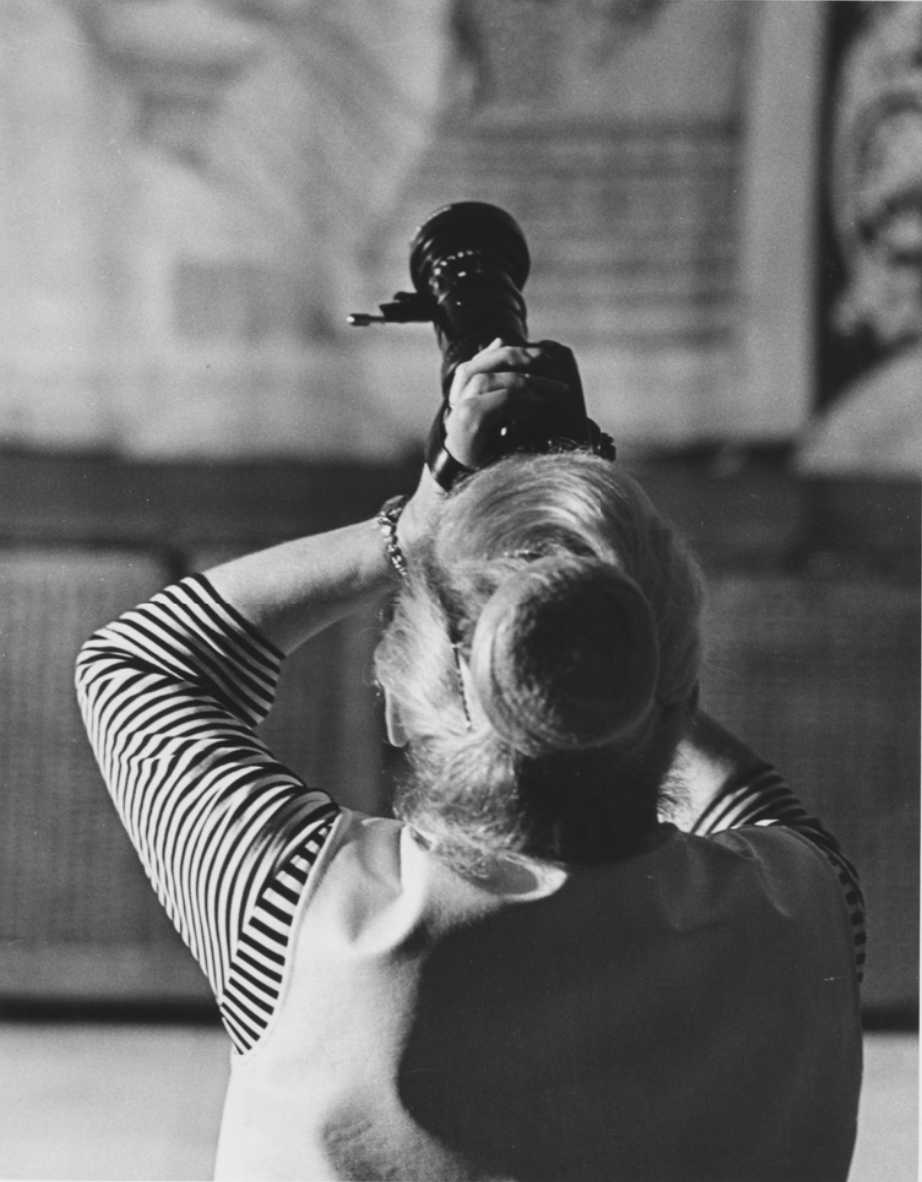
‘Storm De Hirsch made her first motion picture in 1963, two years after the untimely death of Maya Deren, the woman who had virtually masterminded the avant-garde film movement in the United States. Although De Hirsch was born five years earlier than Deren, she was a mature artist — over 40 years old when she began her filmmaking career. Deren was only 25 when she made her first film — the classic Meshes of the Afternoon –and at the age of 44, she died.
‘Though they may never have known each other, they had quite a bit in common. Both women had created new names and personas for themselves; Deren’s were earthy and radical, De Hirsch’s more imposing and regal. Both had backgrounds in poetry and other arts; they were also deeply involved with primitive cultures and the occult. In making their first films, both were supported by their husbands. In Maya Deren’s case, it was an inspired artistic collaboration with Alexander Hammid in a short-lived marriage; Storm De Hirsch’s first professional collaboration with Louis Brigante was disappointing, but the personal relationship endured. Both women made lasting contributions to the American avant-garde film scene, within the limits of their times and talents.
‘The 1960s offered Storm De Hirsch many more options than the 1940s had offered Deren, allowing her to start big, with an ambitious feature-length story about three young women, living in Rome, loosely based on a poem she had written and on her own experiences. Brigante was associate director. Called Goodbye in the Mirror, part scripted, part improvised, it was shot on 16mm and later blown up to 35mm, at a total cost of some $20,000. Variety’s reviewer found it too uneven for a feature, and thought it might have been a sharp, incisive short. Even before its release, De Hirsch already had begun making short films that were much more suited to her painterly and poetic roots.
‘Independent, cheaply made underground films, she later said, were not merely a futile rebellion against Hollywood’s slickness, but were spontaneous efforts to create the equivalent of off-Broadway theater in the medium of film. De Hirsch’s first short film, Journey around a Zero, was made without a camera, simply because she did not have one. Using old black-and-white film stock and some rolls of 16mm sound tape, she painted and etched images of her imagination with a variety of discarded surgical instruments and the sharp edge of a screwdriver. Compared to the $20,000 cost of Goodbye in the Mirror, Journey’s cost was cheap indeed — practically zero. The visuals were pure abstract animation, which De Hirsch described as “a phallic invocation.” In her writing and especially in making her animation abstractions De Hirsch felt she became both man and woman, or either one — not for lack of sexual identification but with an awareness of a cosmic sexuality.
‘De Hirsch’s trilogy entitled The Color of Ritual, The Color of Thought, explored relationships of abstract animated imagery (this time in color) with live photography and what she called “voyages into buried continents of the self.” The very titles indicated her penchant for magic, myth, and ritual: Divinations, Shaman: A Tapestry for Sorcerers, Peyote Queen. In 1968 Storm De Hirsch was awarded $10,000 in the American Film Institute’s first round of grants to independent filmmakers — the only woman among the winners. With the money she made a mini-feature called The Tattooed Man, based on her poem of the same name; it was more episodic than her first film had been, like a “happening” more than a dramatic film, and more representative of her times. For her tenth film, Third Eye Butterfly, De Hirsch used dual screens, side-by-side, creating a 70mm effect. One critic wrote that this encouraged the viewer’s mind to give the two horizontal images a third meaning, as Eisenstein’s montage of two images on a strip of film gave them an implied third meaning.
‘In 1973, for her Hudson River Diary series, De Hirsch used a handheld 16mm camera to create cinematic landscapes and waterscapes shot from a moving train (Cayuga Run) or walking along the frozen water’s edge (Wintergarden). These films began to look more like visual poems than movies based on poems or films for which she had written poetic descriptions. Sometimes for convenience or safety’s sake, she shot on Super-8 which later was blown up to 16mm. When she was given a cartridge loading Super-8 camera to take to the Venice Film Festival, she began her Cine-Sonnets series. Filmed in England?s Heathrow Airport, on the train from Rome to Venice, or in her Venice hotel room, each was three or four minutes long, short and edited in the camera. No random shots of this and that — as her first European film had been — each carefully selected shot was framed by her eye and mind and hand, beautifully lighted by nature or perhaps by God Himself. As the films outwardly became shorter and simpler, inwardly they grew richer and more revealing.
‘With Louis Brigante’s death in 1975, Storm De Hirsch lost not only her much-loved companion of some 25 years, but also the studio where they had worked, much of her creative energy, and ultimately her health. As she succumbed slowly to Alzheimer’s disease, eventually she lost all memory of her achievements in film — the retrospectives at New York’s Whitney Museum and the Museum of Modern Art; her classes in visionary filmmaking at the School of Visual Art; lectures and screenings in Pennsylvania and Ohio, Vancouver, and Brussels, and at many film festivals and women?s programs. At the time of this writing, Storm De Hirsch continued to survive in a Manhattan nursing home with this long and devastating illness. Her fascinating role in independent cinema has yet to be well documented and assessed.
‘Comparison with Maya Deren deserves these further comments. Deren was something of a genius, far ahead of her times in virtually everything she did. Storm De Hirsch was an extremely talented filmmaker of her time, exploring many aspects of film as an artist’s medium. The very title of her film, Peyote Queen, shows her to be an outspoken product of those times — the rebellious sixties, the Beat Generation, the hallucinatory decade. It is a sad footnote to those times that although P. Adams Sitney played a major role in one of her major films (The Tattooed Man, 1968), Sitney’s seminal book on American avant-garde cinema (Visionary Films, 1974) does not even mention her name.’ — CECILE STARR
_____
Stills



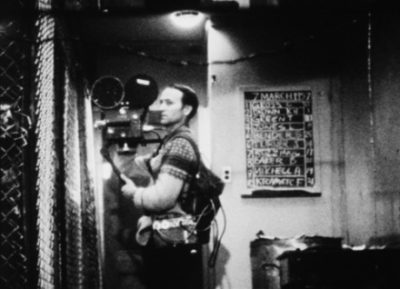

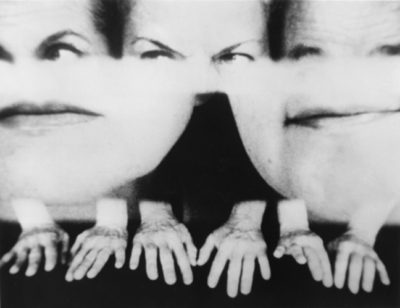
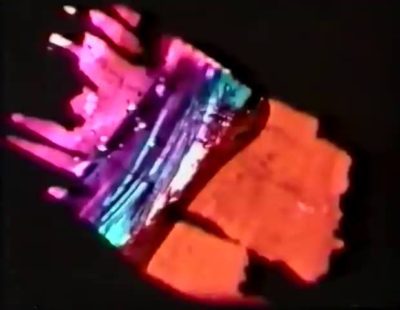

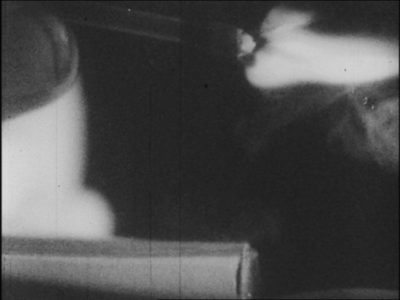

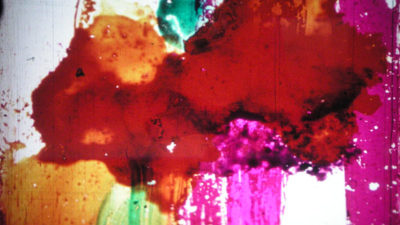
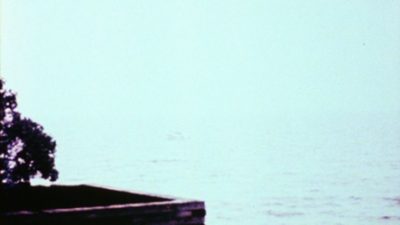


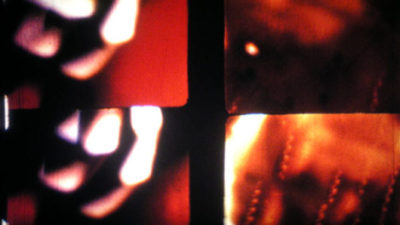

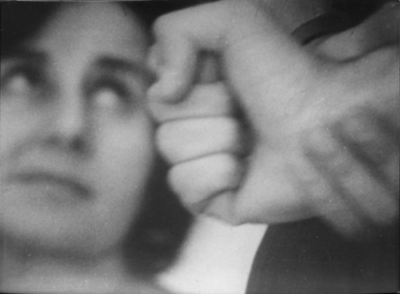

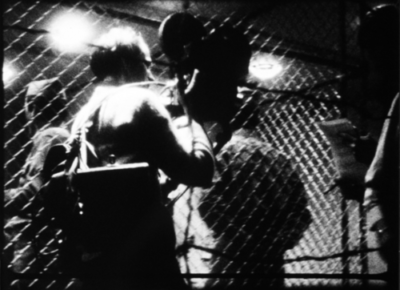
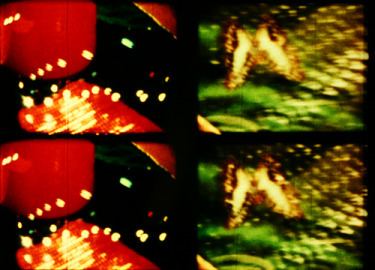
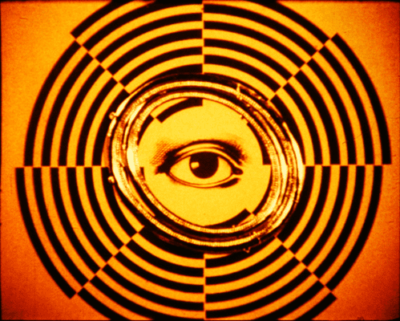
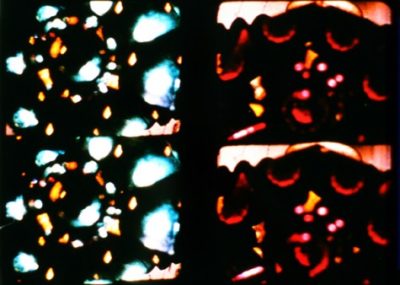

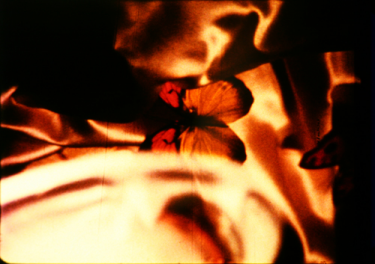




____
Further
Storm de Hirsch @ Film-makers Coop
SdH @ LUX
SdH @ IMDb
Mythology for the Soul: The Collected Poems of Storm De Hirsch
‘PEYOTE QUEEN’: STORM DE HIRSCH, THE WOMAN WHO MADE MOVIES WITHOUT A CAMERA
Book: Twilight Massacre and Other Poems, by Storm De Hirsch
Storm de Hirsch and Shirley Clarke’s conversation (full length)
SdH @ letterboxd
SHIRLEY/STORM
Independent Filmmaker, Storm de Hirsch, Press Conference
_____
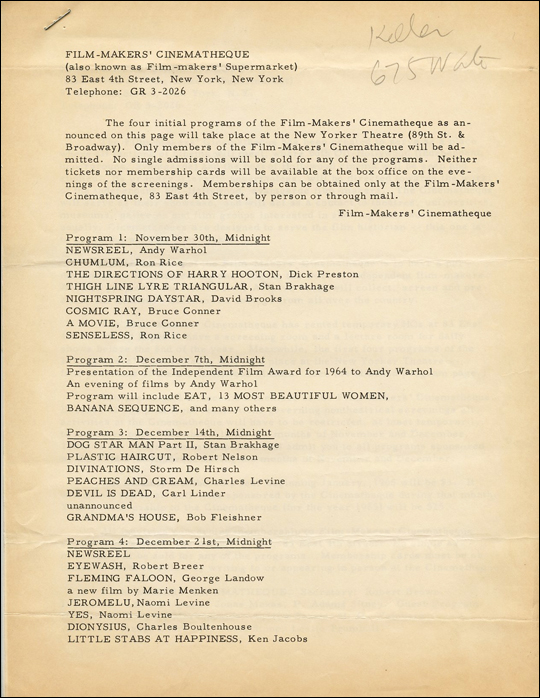
____
Extras
Excerpt: Jonas Mekas Walden (1969), featuring Storm de Hirsch
Gwendolyn Audrey Foster ‘Film for Storm de Hirsch’
Velvet Underground @ Village Gate, NYC, June 7, 1966, raw footage featuring Andy Warhol, Gerard Malanga, Barbara Rubin, Allen Ginsberg, Peter Orlovsky,Tuli Kupferberg, Ed Sanders, Storm De Hirsch & more …
___________
Conversation: Shirley Clarke and Storm De Hirsch
from Underground Film Journal

SHIRLEY: Do you think that lady film-makers are mechanically equipped to handle their field?
STORM: Well, if they’re not, they have other compensations […] The film has to be done in a certain way with Hollywood as the symbol and women were certainly never approached as directors.
[…]
SHIRLEY: Now there’s no doubt that as an industry, [Hollywood’s] reaction to women would be very similar, let’s say, to the advertising industry or the automobile industry or anything where a woman sits and has a certain slot. It’s a preconceived idea and they fulfill it and they allow them to be editors, which has always struck me as very strange, because anyone who knows anything about film knows that the very thing a film is going to say can be changed in the editing. […] And they will give that responsibility to a woman and yet would not allow her, supposedly, what they would consider the highest responsibility as producer-director.
[…]
SHIRLEY: Would you make a difference here in terms of, let’s say women film-makers: that they would be better off doing the kind of film that they can do entirely by themselves, where they got their own eight or sixteen millimeter camera and went out — or where they were in a position like you just described, where they are the director and therefore have people working with them and for them? […]
STORM: No. I don’t favor this whole business in the first place, of making a distinction between women film-makers and male film-makers. I think that when it becomes a creative process there is no distinction. It’s an imposed distinction which is imposed by people in the…
SHIRLEY: Well, historical precedents. In other words…
STORM: It’s a young field where not too many in terms of women enter that field, like they have the other arts, but still I don’t see any reason why it couldn’t have happened sooner except that there were these taboos.
[…]
STORM: I think that society was involved also in the act of film-making. It was very unseemly for a woman to enter into a field of this kind.
SHIRLEY: But why, because it never seemed unseemly to be a poetess or a painter and yet it was unseemly.
STORM: These are the definitions that are laid down by society.
[…]
SHIRLEY: It never occurred to me that I worked in a masculine field because of how I got in, in that I was a dancer and started making dance films on a very personal basis. It never occurred to me that masculinity and femininity and being in a field called film-making was not what I thought I was doing. […] In your case it’s true also.
[…]
STORM: To me, making poems and making films are one, and neither activity excludes the other.
[…]
SHIRLEY: Unfortunately, the cost of making films even now is still too high in reference to the immediate return on the investment; which means that you must have enough money to wait five years — you can make a film and then sit around for five years waiting to get your money back to make the next […] An artist can’t grow that way.
[…]
SHIRLEY: One of the things that people have said to me is how come — how did you ever get to make films? I said, you know, there are several possibilities. One, you could be independently wealthy. Secondly, you could be married to someone who is wealthy. Thirdly, you could find a way to scrounge. And then beg, borrow, and steal. […] How does anybody function in a field that really isn’t going to be lucrative and where your motivation – the thing that starts you — isn’t to make money but merely to maintain it.
STORM: Here we are, two “quote-unquote” lady film-makers. We’re talking, I assume, objectively — like any film-maker. I mean, what is the distinction here? We both operate differently. We have a different approach to our work. We have different concepts or goals, what we want to attain visually.
[…]
STORM: I think both The Connection and The Cool World are very powerful films and they have a sense of violence and they have a large sense of strength which, if one didn’t know, they would unquestionably be identified by most people as the work of a man.
SHIRLEY: And yet to me, it’s an endless give-away in both those films and in the one I’m just doing, that is, what I would consider a feminine way of looking at something […] violence personally, to me, is extremely repugnant. It’s something I’m terribly afraid of. And yet, I’m obviously very attracted to it.
SHIRLEY: Up to this point the only person so far who’s done a real woman’s film has been your Goodbye in the Mirror. In other words, for some reason, even so far, women film-makers have yet to deal with the subject of women. […] I’m jealous that you have been able to do it because I wish I had been able to do it.
[…]
SHIRLEY: Are you saying that you don’t think that there is any particular difference between a man’s film and a woman’s film?
STORM: No, I don’t. I consider both to be artists and that they primarily are artists first and male or female afterwards.
SHIRLEY: Because my own feeling is that there is a difference that hasn’t yet been revealed.
[…]
STORM: You do feel that the time will come when there will not be the labeling?
SHIRLEY: Yes. I don’t think there will be labeling. I don’t think anybody’s going to be concerned.
[…]
SHIRLEY: I’ve no idea what most men film-makers look like from reading reviews. […] Yet I can tell you what every woman who’s making films looks like — size, shape, her coloring. They are described that way.
____________
9 of Storm de Hirsch’s 27 films
____________
Newsreel: Jonas in the Brig (1964)
‘Anyone who remembers the historic contribution that the living theatre made to the New York scene couldn’t possibly forget their production of The Brig which was running when the government seized the theatre for non-payment of taxes. Jonas Mekas decided to make a film of the production to preserve its brilliance and in-depth dynamism. Actors, stage hands, and camera crew broke into the seized locked theatre with its impounded properties during the middle of the night. They recorded the play from start to finish in one night. Storm De Hirsch was there and she made a short newsreel called Jonas In The Brig. Not only was she able to capture a study of Mekas while he was filming, but also in the newsreel there is a tension and apprehension of the moment and even the panic of the possibility of not being able to finish the film.’ — Bob Lehmann
Excerpt
_____________
Peyote Queen (1964)
‘Storm De Hirsch is one of those avant-garde goddesses without much name-recognition outside of underground film circles, but her influence and dynamism has always been lauded by peers. Jonas Mekas, for example (often referred to as the “godfather of American avant-garde cinema”), called her psychedelic classic, Peyote Queen, “among my favorites … beauty and excitement.”
‘De Hirsch was actually a published poet before transitioning to film, and as such didn’t have ready access to a camera early on. Her first improvisational techniques were innovative manipulations of whatever film was just lying around at the time, making her as much a “sculptor” of celluloid as a filmmaker. The results of her experiments are now recognized as foundational films in avant-garde cinema. In an interview with Mekas, she spoke of her early work, like Peyote Queen, saying:
‘”I wanted badly to make an animated short, but I had no camera available. I did have some old, unused film stock and several rolls of 16mm sound tape. So I used that—plus a variety of discarded surgical instruments and the sharp edge of a screwdriver — by cutting, etching, and painting directly on both film and [sound] tape.”‘ — Dangerous Minds
the entirety
____________
Goodbye In The Mirror (1964)
‘A dramatic feature shot on location in Rome. Centered around the adventures and illusions of three girls living abroad, the film explores their restlessness and personal involvments in assuming the role of woman as hunter.’ — S. D. H.
‘I, myself, belonging to the Spies for Beauty, Inc., and the humble monk of the Order of Fools, was allowed to peek at this film, and I couldn’t believe what beauty struck my eyes, what sensuousness.’ — Jonas Mekas
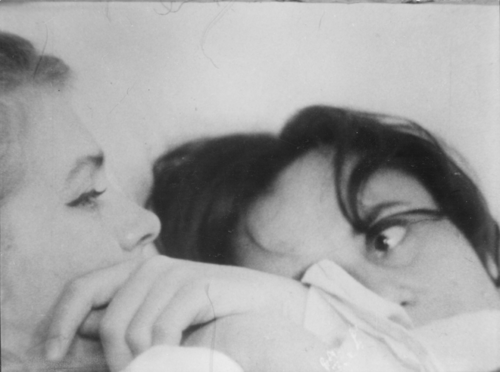
_____________
Divinations (1964)
‘Divinations was completed in 1964 at the same time Storm De Hirsch was finishing her only feature film, Goodbye in the Mirror. According to the Film-makers’ Cooperative Catalogue No. 4, published in 1967, the music making up the film’s soundtrack is a ritual chant of a Maori medicine man and a Sicilian tarantella performed on a jew’s harp.
‘Also in the Catalogue, De Hirsch described the film as: “A film poem that records a psychic event in color, shape and sound. The inner eye reveals its visionary powers through a series of mystical signs and symbols, a collage of negative and positive images, incantations and sorcery.” P. Adams Sitney and Ken Kelman both called Divinations “Among the best films of 1964.”’ — Underground Film Journal
the entirety
_____________
The Tattooed Man (1967)
‘A major work in terms of style, structure, graphic invention, image manipulation and symbolic ritual. Short, abbreviated dream-like moments, fused together like a tension and the dynamics of motion picture time… groping around for new myths. Symbolic invention and theatricalisation of dreams, and making them literal, is the whole function and purpose of movie making… her concept of the problem is sweeping and very large.’ — Stan Vanderbeek

The film can be viewed online here
_____________
Third Eye Butterfly (1968)
‘THIRD EYE BUTTERFLY requires DOUBLE SCREEN projection, i.e., Reel #1 and Reel #2 are to be projected simultaneously on two separate projectors with one screen area directly adjacent to the other. Reel #1 is to be projected on the LEFT screen; Reel #2 on the RIGHT. Synchronized start marks are indicated by a punch hole on the leader of each reel. BE SURE TO OBSERVE THIS SYNCHRONIZATION! Sound must be open on one projector only during projection (Reel #1).’ — Filmmakers Coop
‘Where is the light coming from? The flavor of the colors are succulent to the long vision in the soul. How can dust cover the arrows of light? How can darkness favor oblivion in the face of light? The variations of soul-touch exist in the auras of illumination. The Great Eye dominates.’ — S. D. H.
‘The 70mm-like effect of THIRDE EYE BUTTERFLY encourages the mind to work as a third eye by fusing the two side-by-side screens into a third meaning, just as Eisenstein caused the meanings of two juxtaposed shots to result in a third implied meaning.’ — Casey Charness, Columbia University
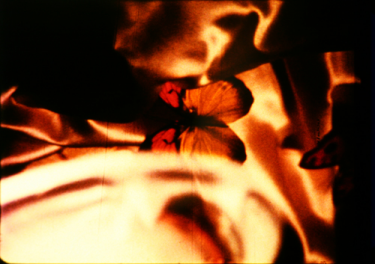
______________
An Experiment In Meditation (1971)
‘The shape of change, the shape of memory has walked many miles in the mind to recreate a landscape, a manner of subterranean speech which may never reach its destination to the surface but roolls in the bloodstream swollen with speech invisible to the ear but palpable to the feelings that travel inside the network of the body/brain. The vision and the visitation occur simultaneously.’ — S.D.H
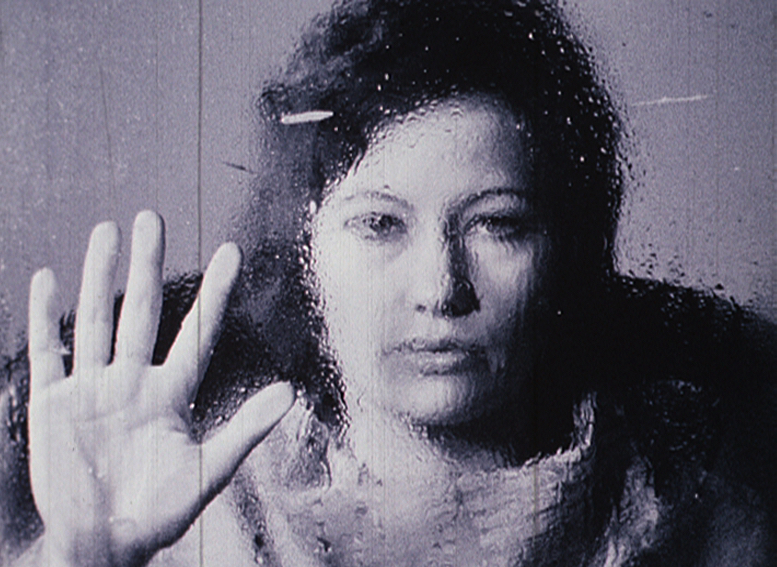
_____________
September Express (1973)
‘A study of time in motion. An accelerated montage of reflections and landscapes framed in the window of an express train running from Rome to Venice. Dedicated to the writings of J.W. Dunne, the collage of Kurt Schwitters and the cubistic paintings of Braque …’ — MUBI
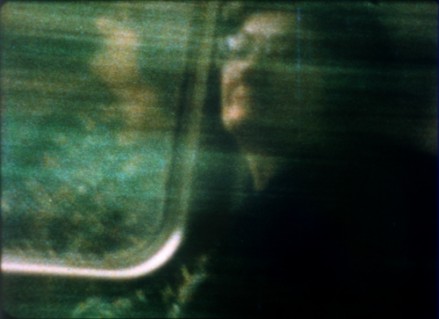
This film is available on MUBI
_____________
Geometrics of the Kabbalah (1975)
‘5 is water, 5 is the letter X. 5 is distance. 5 says no. 5 laughs when divided into 2. 5 swims backwards, and space is five. The cherry tree is one. The hurt is 1 plus 1, the wish is two. The wonder three. The absence four, and the five is the Universe. The Universe in the head, the universe in the eye, the sky and the waterdrop.
‘5 is the unicorn in the circle, 5 can multiply, subtract, and dismiss. Divided and dismiss. 5 is the smoke of heaven, 7 unholy and 12 unmentionable. The privacy of Alpha and Omega is 12, the world is 12. The first and the last of the hunt is 12. 12 is the cry, the secret, the Great Mistake. 12 is the falling steeple. 12 stands high like the meeting of the gods because 12 are lurching altitudes beyond man whose life and death lie only in the 3. Stand 1 to 5, divide and topple. The points beyond the gate of 5 are sharp, walk carefully. 5 is the enclosure, 5 is the pointed start of the planet.’ — from Brook 16, “Source Books of Storm De Hirsch,” 9/24/66

*
p.s. Hey. ** esme, Hi, esme. Well, the website in the novel is based on a real escort advertising/reviewing site that existed at the time. I had found it and grown fascinated by how the men commenting and reviewing there seemed to be using the escorts as mere inspirations to spin fantasies for themselves and for each other, and how the escorts themselves, who were presumably real guys looking for paid sex dates, ended up being totally derealised. And I copied the form of that website in the novel as it seemed to be some kind of perfectly designed trigger for all those sexual fairytales. The absence of women characters is to help make the setting and novel feel myopic and ‘utopian’ for the characters, such that the real world could be successfully excluded and not challenge or foreshorten their imaginative leaps, so the novel would become a private sexual fantasy in and of itself, if that makes sense. I hope that answers your question? Thank you! ** David Ehrenstein, Hi. I personally don’t care if Frampton was pompous or not. I’m interested in the work. When I used to curate and host readings and events at Beyond Baroque in the early 80s, some of the writers I hosted whom I really admired turned out to be assholes to deal with, but that didn’t change my admiration for their work anymore than the niceness of the nice ones did. I was their reader, not their friend. Everyone, Mr. Ehrenstein offers this share to those who are interested. David: ‘Now here’s a real find: A complete performance of the Original Chicago Second City from 1960. An hour and a half’s worth of the greats: Alan Arkin, Barbara Harris, Severn Darden, Paul Sand, Eugene Troobnick, Andrew Duncan and Mina Kolb. Most are gone now, alas. But Alan Arkin is as big a star as ever, Mina Kolb is on “Curb Your Enthusiasm” and Paul Sand (who the husband had a brief affair with back in the day) performs off and on at a club out near the beach in Venice (Paul is now 88 and his real last name is Sanchez). ** Thomas Greig, Hi, Thomas. Well, I wrote ‘The Sluts’ gradually off and on over as period of about 10 years, and it changed a lot during that time. For instance, I started it before there was an internet, so obviously it was a very different thing to begin with. Essentially, I was very interested in the power dynamic and mode of communication that happens between someone selling themselves as a sex object and those who are looking for a sex object. I was very interested in how someone would choose to present and advertise themselves thusly, what they would include or exclude, how or why they would lie or tell the truth, and similarly on the ‘buyer’s’ side, what they would wilfully forget or overlook about the intended sex object’s personhood and personal identity to make him the object they desired. That exchange, so coded and slippery with the truth, fascinated me as a place to create fiction. I hope that helps. ** Bonnie, Hi, Bonnie. Yes, my intention was to create participation in the reader, for sure. I kind of wanted the reader to be something like the commenters and reviewers, getting caught up in their game, sometimes seduced, sometimes skeptical, but also to not completely lose the humanity, I guess, of the young guys who might be ‘real’ people using their escort identity to play their own games. So, yes, boundary crossings, but, in the case of the reader, in a context that is clearly and safely defined as fictional. Thanks! ** Iulia, Hi, Iulia. Yes, I’m very exciting by virtual communication, both what it has already enlarged and complicated and simplified in terms of interpersonal connection and by the unknowns ahead. As a fiction writer, it presents enormous new ideas and forms to work with, so it feels like an incredible windfall in that sense. I’m interested in miscommunication. I’m someone who believes that confusion is the truth. So, for art in general, I find virtual communication nothing but inspiring. Obviously, social media can become a big mess when the issue is what is the truth, and obviously in regards to politics especially, but I’m kind of an optimist, and I think the frontier-like layout of online communication will gradually become a language that is graspable and less mystifying. Thank you! ** kier, Hey, hey, kier!! I think the Charles Ray show opens at the very beginning of June, so I think you’ll be here? Very excited to explore that amazing building the Pinault Collection is housed in. It’s in central Paris, at Les Halles. This is the building, and this is the central space. So hopefully you’ll be here to join the exploration. Land art near Paris? Maybe you mean the Michael Heizer show at the Gagosian space? That was temporary and gone now. I can’t think of any other Land Art around here unless I’m spacing. Cool that your prof. loved your drawings. I mean … no brainer, but still. And your day sounds both sparkly and productive, not bad, man. Me? I had to do some last minute shit work on the TV script, but that’s over. Hung out with my friend the writer Andrew Durbin, who’s the new editor of Frieze. I think I finished my new GIF novel. I’m going to check it over a few times, but I think it’s finished. Kind of quiet. Seeing Sunn0))) do a three night gig/residency starting on Friday, so that’ll be cool. Zac’s down south visiting his mom, but I’ll say hi as soon as he returns. All’s good. What’s new? Big, big love!!!! ** Laura Baliman, Hi, Laura. It was difficult to write because I wrote it over a long period of time, off and on, ten years, and it took me a long time to figure out how to make it work correctly. It wasn’t difficult for me to write if you mean in terms of coping with the subject matter. I’ve written about that subject matter in different ways for a long time, and I’ve gotten to the point where I can be quite objective about it and concentrate on how to illustrate its power/assaultiveness while trying to challenge it too. Thank you. ** Schoolboyerrors, Hi, prof! Zac and I have already shot quite a bit of footage for the Fujiko Nakaya documentary, but we put it aside to make the fiction films. We hope to go back to that and make the film, but it’s been long enough that we need to meet with Fujiko and make sure she’s good with us finishing it. Also, we have a producer for the documentary now, whereas when she said we could do it, it was more of an experiment, so we need to discuss all of that with her, which means visiting Tokyo where she lives. We hope to do that and see her this spring. Sorry about the commenting issues. I’ve tried to get my host to fix that many, many times, but they can’t figure out what the problem is, so the blog is doomed in that sense, I guess. Love, me. ** Rebekah Rochester, Hi, Rebekah. Oh, I completely understand why someone wouldn’t want to read or finish reading ‘The Sluts’. It offers a particular challenge, and the decision of whether it’s a challenge one wants to take is 100% a reader’s. One of the things I love about books, novels, is that a novel can’t be born or exist without a reader’s imagination, and the reader has the power of life or death with a novel. I love how much power that gives a reader. I love how relatively balanced the power dynamic is between books and their potential readers. It’s very different, in that sense, from movies or TV or photographs where a viewer can be assaulted and transgressed at even an accidental glance. So, yes, people declining to read or finish the book is more than okay, it’s only interesting to me as the writer. Thanks a lot. ** Meg, Hi, Meg. Sorry about the problem of not seeing other comments. There’s some issue there with this blog that I haven’t been able to fix our get fixed. Mm, very interesting question. I don’t think I would have written the novel differently given the birth and development of highly visual platforms since I wrote it. Even at the time, there were a lot of visual components, for instance with the escort website whose form I copied for the novel, images showing the escorts were a very important aspect of the site and how it worked, but I decided to exclude them. I’m interested in what happens to the novel now that the internet is so rich and developed and offers a greatly more fleshed out and exciting context. I don’t think the answer is to try to turn a novel into some kind of book-shaped media outlet. I’m interested in how the challenge of the internet makes the novel a place where a writer is challenged instead to use language as complexly and vibrantly as possible in order to offer a different and unique experience. I think in terms of depictions of sex and violence in particular, the written word is a far better and more generous, accurate way to depict those things than video or other imagery. With imagery, it’s extremely difficult to get around the effect of shock or of base titillation. Imagery tends to greatly simplify sex and violence in a way that I find problematic personally. My interest is in those things as areas of exploration and of determining one’s own relationship to them, and I think the written word, in its passivity and drug-like effect, is a more fruitful way to interact with a viewer when it comes to those things. Thanks very much. ** Maia, Hi, Maia! You’ve been here before, no? It only greatly interests and pleases me that the novel would be taught in a course like that. I think of that context as being a situation where the novel will get a more attentive and detailed reading than not. So I like it. And, you know, I respect Diarmuid greatly, so I feel pretty confident that he’s teaching the book in a way that I would be honored by. Even though I left academia very early, after my first year at university, I do think of academia in a perhaps romantic and idealised way. Anyway, thanks. ** Nick Toti, Hi, Nick! Your friend’s work looks awesome at a glance. I’ve investigate/watch once I get out of here. Thanks a lot! Ha ha, of course I remember him from the film now. What a multi-talented fella! Hope all is great with you. ** Jabin, Hi, Jabin. Your reading of the novel’s dynamics and intentionality is very right on, thank you. Well, hm, in the case of the novel, I was mimicking a structure or structures that preexisted — the form of the website in the novel , the reviews, the chatroom, etc. — exactly mimicked the form of the site I was using as a model, and I was very interested to figure out how they worked as they did in the ways you’re speaking about — how/why it effected the participants/commenters and how/why it riveted an outside viewer, and in my case a writer who became obsessed with simulating or transposing or reinventing its effect in a novel, and, more precisely, taking its effect one step further where my viewership of the site’s goings on and my refinements/ alterations became yet another filter for yet another, more distanced viewer, i.e., the reader. So I was more of an explorer when writing the novel than someone with a preset idea of how the spaces and forms I was studying worked, if that makes any sense. I’m not sure I’ve expanded out as much as you asked. It’s a complex question that would be easier to answer if you and I were able to have a conversation around the topic, I think. But I hope that helps somehow. And thank you a lot. ** Patrick F, Hi, Patrick. Thanks a lot! I’ve always been interested, as I kind of explained above somewhere, in the exchange between the self-styled or self-invented ‘sex object’ and the person seeking a depersonalised ‘sex object’. Before the internet, I was interested in the real world equivalents — hustler bars, streets hustling, etc. But then the internet made it possible to pay attention to those exchanges in great detail without having to inordinately intrude. I don’t know why I’m so drawn to that particular kind of interaction. Something about it scares and confuses and excites me in a way that I want to understand, and writing is a kind of self-exploration for me in addition to being an art I try to master. Sure, I haunt various sites looking for ideas for my fiction and for just general pleasure, mostly stuff I geek out on like amusement park fanatic sites and experimental music sites and stuff. ‘Helicopter’ is actually based on something I wrote here on the blog, a seemingly true story about the death of Russian porn star. Bradford used to be a fairly regular commenter on my blog before Deerhunter got big. He’s a fantastic guy, and, obviously, I’m really honored to have had a part in inspiring ‘Helicopter’. Thanks a lot. Take care. ** Isla, Hi, Isla. I’ve been writing about the axis of sex and violence since I was a teenager. It’s always been something very powerful to me, and I’ve always wanted to understand why, and I use my writing partly to try to understand, or at least to organise, things that confuse me. I wrote a number of novels before ‘The Sluts’ that tackle that axis in different ways. It’s very tricky because, on the one hand, I want to try to get around the inherent assaultiveness and shock that that material carries with it, but, on the other hand, I want to give the material its power and force. The vast majority of art that tackles that area tends to neuter it, make it merely pornographic or horrific or use it as a venue for psychological analysis. For me, those reductions don’t answer the question of why that axis is so powerful. I am deeply interested in negotiating the issue of complicity between a reader and the writer and the material the writer is working with, yes. When I’m writing, I’m thinking almost exclusively about how to negotiate that in a way that is as fair to the reader as possible while not compromising the effect the material necessitates. I keep trying to find the right way to depict it, and ‘The Sluts’ is one of my attempts. Thank you for the question and about the blog too! ** _Black_Acrylic, Hi, Ben. Ah, the days when Damien Hirst didn’t make one’s skin crawl before one even looked at what he made. ** Steve Erickson, Hi. Really, high hopes? I hope it met them. I haven’t listened to the new Destroyer album yet, but if the incredible tracks I’ve heard from it so far are any indication, I expect it to be amazing. But I’m a massive fan of his, as you know. I think books are still seen as serious endeavors, even if not so many actually read them anymore. And God knows the world, or at least the US, right now is filled with people desperately searching for anything that they can employ to justify their knee-jerk censoriousness. Yawn. Sequels can never top the startle caused by the originals. ** Hi, Bill. Thanks, buddy. That Kerry Skarbakka piece is cool. I’ll go look for others by him. Yeah, I’ve always found Davenport’s writing to be quite witty, so I don’t understand either, but so it goes. ** Okay. Do you know the films of Storm de Hirsch? Well, now you do, or at least you have a golden opportunity to. I recommend utilising it, of course. See you tomorrow.




 Now available in North America
Now available in North America 
hey dee-lish:) i don’t know storm de hirsch at all, but i’m definitely watching peyote queen, thank you maestro! we’re in paris for the first week of june so hopefully that means we can go see the charles ray. the building looks insane, incredible. yes it was michael heizer, that’s too bad, wish i hadn’t missed that! did you go? congrats on finishing the gif novel! im very very jealous of your three-night date with sunn o))). we would love to have you and zac (and yury of course) over for dinner at our house in arcueil this spring, if you have the time and willingness to leave the city! my friends are looking forward to meeting/hanging out with you. today i have fed the cats again, and now i’m in the studio. have to do some group crit prep for tomorrow, and then look at my friend’s application to the mfa program here and give her some feedback. two of my best friends are applying for next year and i really really really hope they get in, that would be like a gift from the universe. plus they deserve it. tonight i’m meeting a friend who moved to stockholm and is about to go to lisbon for a semester, he’s in oslo for just one day. i think that’s all my hot news for now. hope you had a ravishing day. did you? love me
Great to see this tribute to Storm DeHirsch. She was a marvelous filmmaker (I especially admire”Goodbye in the Mirror”) and a truly lovely person. That Sitney doesn’ teven mention her in his book is scandalous.
True many artists of note are assholes. That’s why I prefer to deal with those that aren’t. Francis Bacon was a complex and sometimes troublesome person who created troubling art — but I found him to be exceptionally nice. Andy was, as Mary Woronov famously told me “Never not nice.” Jean-Luc Godard, by contrast is a Complete Asshole. He was monstrous to Anna Karina and Truffaut. Truffaut was wonderful as was Rohmer, Chabrol and Rivette.. Roman Polanski is also very nice.
In New York the Biggest Deal Hustler Bar was “The Haymarket” in Times Square. Tony Perkins used to go there. A lot.
In L.A. there was a place called “Numbers” that used to be next door to “Greenblatt’s” on Sunset. It’s gone now.
The Grammy Award went to a Piece of total Garbage. But they did manage to give a couple of prizes to the great Jacob Collier for his arrangements of Moon River
and
All Night Long
Jacob is the new Kay Thompson, IMO.
The Destroyer album feels like the end of a trilogy formed by KAPUTT and ken. The production seems ’80s-inspired and synth-driven (while using lead guitar sounds of that period as well), but Bejar revisited his approach without repeating himself.
COLOR OUT OF SPACE isn’t great, but it’s a lot of fun. Nicholas Cage can play family men who gradually go nuts in his sleep at this point, though. (Ditto for Tommy Chong and eccentric, spaced-out old hippies.)
I’m not familiar with DeHirsch’s films; some awesome stuff here.
Been looking at the Zulueta films you showcased earlier; still trying to track down Arrebato. Some of the soundtracks are pretty fine, especially A MAL GAM A. No credits for sound; did Zulueta put together the soundtracks too?
Bill